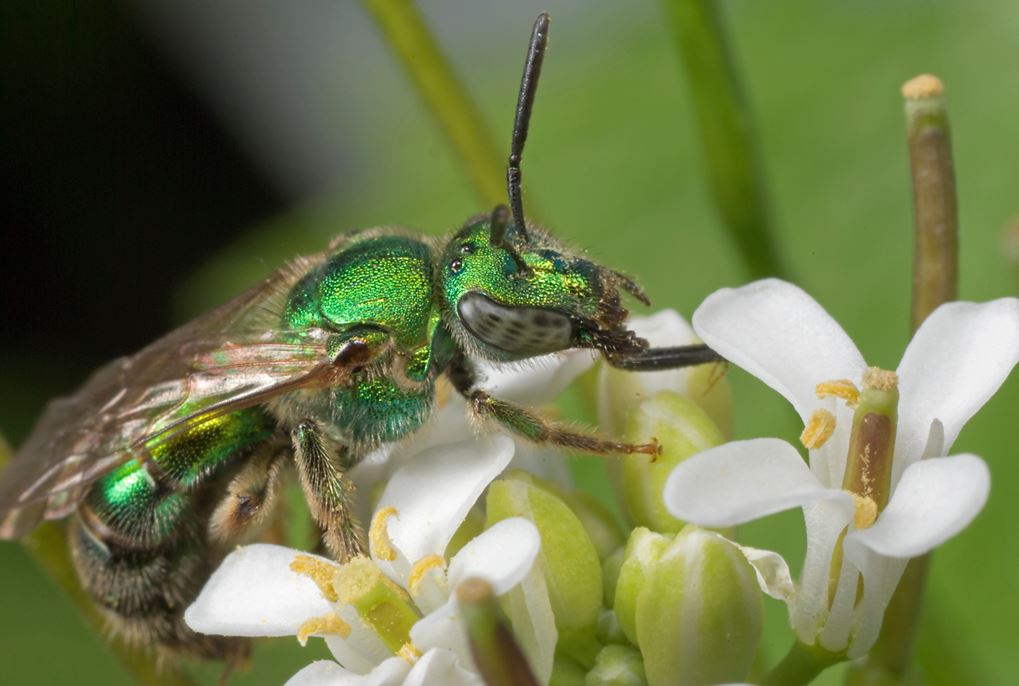Honeybee ( © Linden Gledhill, lindengledhill.com). The Honey Bee, Apis mellifera (honey-bearing bee) is the common Honey Bee. Honey bees live in a colony of up to ~60,00 bees with a queen, worker bees and drones, they tend to their brood and store honey (from dehydrated nectar) and pollen. They are an important pollinator of a variety of crops and wildflowers.
Blue Orchard Mason Bee ( © Linden Gledhill, lindengledhill.com). Mason bees are solitary bees that nurture their own brood, as opposed to having a queen and worker bees. However, they like to build their nests near one another, in hollow tubes or pre-made holes provided by the gardener or orchard grower.
Bumble Bee ( © Linden Gledhill, lindengledhill.com). The Bumble bee or Bombus from the Greek word that means ‘a buzzing sound’ are hairy, long-tongued bees that are the second most important pollinators after the honey bee. This bee is carrying pollen attached to it’s hind legs. Bumble bees are social insects living in a colony of up to ~200 bees. Unlike Honey bees, Bumble bees do not dehydrate their stored nectar to turn it in to honey.
Mason Bee ( © Linden Gledhill, lindengledhill.com). Mason bees are solitary bees that nurture their own brood, as opposed to having a queen and worker bees. However, they like to build their nests near one another, in hollow tubes or pre-made holes provided by the gardener or orchard grower.
Carpenter Bee ( © Linden Gledhill, lindengledhill.com). The gentle Carpenter bee with it’s short mouth parts is an important pollinator for shallow flowers.
Metallic Bee ( © Linden Gledhill, lindengledhill.com). The Metallic bee belongs to the larger family of Sweat Bees, solitary bees, which are among the smallest of our many local bee species and important pollinators of small flowers.
Mining Bee ( © Linden Gledhill, lindengledhill.com). These gentle solitary bees nest in the ground and are an important pollinator.
Yellow Jacket ( © Linden Gledhill, lindengledhill.com). The Yellow Jacket is a Wasp, which like honey bees lives in a colony, but unlike bees, gets it’s protein source from other insects as opposed to pollen.








